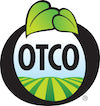What is Vitamin C? 5 Delicious Ways to Get this Super Antioxidant in Your Diet
Most of us know to avoid too much sugar, sodium and saturated fats in our diet, and to make sure to include vitamins, minerals and amino acids. But how much do we really know about these key nutrients, and in particular, vitamin C?
So what is vitamin C? Well the short answer is that it's a super antioxidant with incredibly important benefits. And if you think that your morning glass of orange juice is the only source of this powerful nutrient, think again.
Many animals (including our beloved dogs and cats) can produce vitamin C (in the form of l-ascorbic acid or ascorbate) on their own, but not us humans. We must get it from our diet - - and plenty of it. Did you know that we need vitamin C to help synthesize collagen (tendons, blood vessels, bones and ligaments, skin), and to help our brains produce norepinephrine, a neurotransmitter critical to brain function and mood? It also helps our bodies convert stored fat into energy, and plays a role in the metabolism of cholesterol.
Clearly, vitamin C is important. Without it, we're at risk of developing serious diseases and illnesses including scurvy and gout. Also low levels of vitamin C can also slow down wound healing. It has such potent benefits that Dr. Linus Pauling, the only person to win two unshared Nobel prizes, became enamored with vitamin C and its ability to prevent and treat disease. It was his research that led to the widely accepted use of high levels of vitamin C to combat colds and the flu.
Getting vitamin C from your diet rather than from a supplement is an excellent way to give your body a bioavailable, and easily digestible form of the nutrient. In fact, some of nature's most delicious foods are rich in vitamin C, so adding them into your diet is easy and well worth it! Here are some of our suggestions:
1. Bell peppers in any hue are a rich source of vitamin C (and beta carotene!). Even more so than the beloved orange! Just a half-cup serving of raw red bell pepper can contain 140 milligrams of vitamin C (RDA is between 75-90 milligrams for adults per day).
2. Parsley
This wonderful green herb is bursting with vitamin C—more than 130 milligrams per cup. Okay, that might be a lot of parsley to eat in one sitting, but have you tried juicing it? Parsley makes a wonderful addition to a fresh fruit or veggie juice.
3. Berries are one of nature's best foods. They're sweet, but not too sweet, and oh so good for us. Strawberries can contain nearly 150 percent of our recommended vitamin C intake in just one half-cup serving, so add some to your cereal or eat them as a good low cal snack.
4. Camu Camu berries have been well loved throughout South America for eons. And while you can't get them at a supermarket like strawberries, several superfood companies are importing dried camu berry powder, which contains more vitamin C than any food on earth! It's tart and tangy, and makes a wonderful addition to fresh juices, fruit smoothies, and even raw food desserts.
5. Kale and other dark leafy greens are loaded with lots of vital nutrients including (you guessed it) vitamin C. Kale can contain 130 milligrams per serving—nearly double the RDA for women! So eat your greens and stay healthy!
How often do you eat these 5 vitamin C rich foods? If the answer is not enough, it’s time to go food shopping!
image: Alan Cleaver
Leave a comment
Comments will be approved before showing up.



